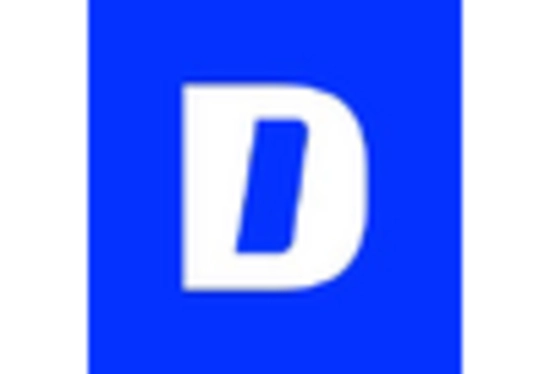Rising Vehicle Production and Sales
The Automotive Exhaust Aftertreatment System Market is closely linked to the rising production and sales of vehicles across various segments. As economies recover and consumer confidence improves, vehicle sales are expected to rise, leading to increased demand for aftertreatment systems. In 2025, the global automotive production is anticipated to reach approximately 90 million units, which will directly impact the aftertreatment system market. This surge in vehicle production necessitates the integration of advanced exhaust aftertreatment technologies to comply with emission standards. Consequently, manufacturers are likely to invest heavily in developing efficient aftertreatment solutions, driving market growth at a projected CAGR of 5.5% over the next few years.
Integration of Advanced Technologies
The Automotive Exhaust Aftertreatment System Market is witnessing a notable shift towards the integration of advanced technologies, such as artificial intelligence and machine learning. These technologies enable real-time monitoring and optimization of exhaust aftertreatment processes, enhancing efficiency and performance. For instance, predictive maintenance powered by AI can significantly reduce downtime and operational costs for manufacturers. Additionally, the incorporation of sensors and IoT devices allows for better data collection and analysis, leading to improved system designs. This trend is expected to contribute to a market growth rate of around 6% annually, as manufacturers increasingly adopt these technologies to stay competitive and meet consumer demands for higher efficiency and lower emissions.
Regulatory Compliance and Innovation
The Automotive Exhaust Aftertreatment System Market is significantly influenced by stringent regulatory frameworks aimed at reducing vehicular emissions. Governments worldwide are implementing increasingly rigorous standards, such as Euro 6 and EPA Tier 3, which mandate lower nitrogen oxides and particulate matter emissions. This regulatory pressure compels manufacturers to innovate and enhance their aftertreatment technologies, including selective catalytic reduction (SCR) and diesel particulate filters (DPF). As a result, the market is projected to grow at a compound annual growth rate (CAGR) of approximately 5% over the next five years, driven by the need for compliance with these evolving regulations. Furthermore, the push for cleaner technologies fosters research and development investments, leading to advancements in aftertreatment systems that not only meet but exceed regulatory requirements.
Growing Awareness of Air Quality Issues
The Automotive Exhaust Aftertreatment System Market is significantly influenced by the growing awareness of air quality issues among consumers and policymakers. As urbanization increases, concerns regarding air pollution and its health impacts have become more pronounced. This heightened awareness is prompting governments to implement stricter emission regulations, thereby driving the demand for effective aftertreatment systems. In many regions, public health campaigns are advocating for cleaner air, which in turn influences consumer preferences towards vehicles equipped with advanced exhaust aftertreatment technologies. This trend is expected to bolster market growth, with projections indicating an increase of approximately 6% in the adoption of aftertreatment systems as consumers seek to contribute to improved air quality.
Sustainability and Eco-Friendly Solutions
The Automotive Exhaust Aftertreatment System Market is increasingly driven by the demand for sustainability and eco-friendly solutions. Consumers and manufacturers alike are becoming more environmentally conscious, leading to a surge in the adoption of green technologies. This shift is evident in the growing popularity of electric vehicles (EVs) and hybrid models, which require advanced aftertreatment systems to manage emissions effectively. The market for aftertreatment systems is projected to expand as manufacturers develop innovative solutions that align with sustainability goals. For example, the use of biofuels and alternative energy sources is gaining traction, prompting the need for compatible aftertreatment technologies. This trend is likely to propel market growth, with estimates suggesting a potential increase of 7% in the coming years.

















Leave a Comment